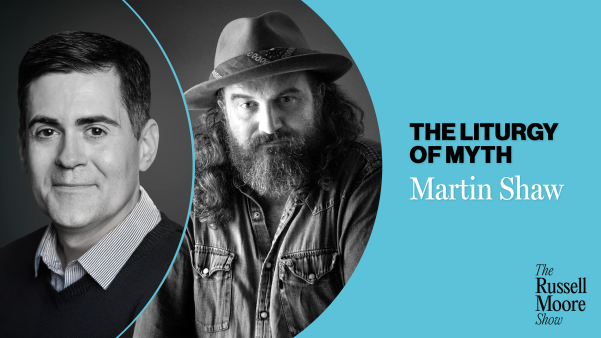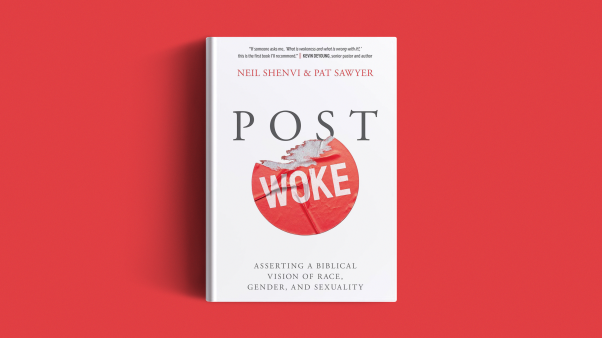In post-Christian Britain—a culture where few people listen to any kind of public speaking, sacred or secular—Rev. Michael Curry’s royal wedding sermon succeeded in capturing the public imagination in a way that few had expected. For many Brits, the royal wedding’s most unexpected outcome was that a sermon, of all things, could spark a national conversation on race. “Who would have thought,” the response went, “that preaching could actually be engaging?”
At present, it seems as though preaching—in its quality and significance—is often held in low esteem, both within and outside of the church. The common reaction in the British media to Rev. Curry’s preaching is a good example of this. Reflecting on his sermon, one opinion writer in The Guardian noted quite frankly, “I had not expected to be moved.”
Within the Christian community it might be said that the internet, which offers us instant access to a small pool of exceptionally gifted preachers, has produced a general culture of dissatisfaction with preaching. Although few of our local preachers can preach at that superstar level, many of us nonetheless hold them to that unattainable standard. In 2018, it is common for Christians to be enthusiastic about one or two preachers, who are almost never their own pastors, rather than about preaching in general.
T. David Gordon’s Why Johnny Can’t Preach has put forward that current day preaching is not particularly good, and that most churchgoers do not expect it to be. In his argument, the typical 21st-century sermon is a rambling, inarticulate, and unsuccessful attempt to say something that is somehow connected to the Bible. This is the case, he contends, because changes in modern media have made it exceedingly hard to form good preachers: today’s preachers have grown up ignorant of literature in a world that communicates by phone calls, text message, and slapdash emails. For the most part, those preachers never learned to read or compose texts with care, which means—Gordon believes—that they use language sloppily and find it hard to discern issues of greater and lesser importance in a text. Little wonder, then, should preachers hewn from that crumbling cultural rock struggle to understand Scripture and find themselves ill-equipped to preach in accurate, compelling language to advance an identifiable central point.
A century ago, the Dutch Reformed theologian Herman Bavinck (1854–1921)—professor of dogmatics at the Theological School in Kampen and the Free University of Amsterdam and author of the widely read Reformed Dogmatics—grappled with a similarly negative set of views on preaching.
During Bavinck’s lifetime, the Netherlands underwent a process of rapid secularisation. Six years before his birth, a new liberal constitution had turned a society previously dominated by the mainline Dutch Reformed Church into a secular liberal state. Bavinck’s native environment was one where rival outlooks jostled for space and influence in the public domain. On the ground, this meant a proliferation of public voices speaking via different media. Political parties and newspapers emerged, state education was reimagined, and new kinds of public speakers—secular public intellectuals, novelists, and stand-up comedians—came to the fore.
Reflecting on this sudden abundance of public voices, Bavinck once wrote that, “In the present day there are more preachers outside than inside the church.” Faced with this flood of competition, Bavinck did not think that his period’s typical sermon fared well. The problem Bavinck identified in 19th-century preaching, however, had little to do with the average preacher’s literacy or articulacy.
19th Century Wisdom for 21st Century Preaching
A great deal of Bavinck’s writing on preaching—critical and constructive—could be brought into the present in more or less the same form. In response to those who hold their pastors to an impossibly high standard, for example, he warns against the dangers of becoming a connoisseur of fine preaching. To expect the homiletical equivalent of Michelin-standard food at every mealtime is “to find fault with the will of God, who only gives the glorious gift of eloquence to a few.” Listeners, rather, should be reasonable, remembering that the average pastor has a constant stream of tasks alongside preaching. A pastor who takes every part of his work seriously “cannot always be fresh and recent and new” in the pulpit.
In comparison to the Why Johnny Can’t Preach view that modern culture’s inarticulacy killed preaching, however, Bavinck’s writings on the paucity of 19th-century preaching provide a striking contrast.
Unlike today’s seminary professors, Bavinck could safely assume that his students had been taught to read and compose texts with care. In the 19th-century Netherlands, the average pastor’s high school education took place in a gymnasium, an educational stream centered on classical literature and languages. Even those who became pastors without first following a gymnasium education had to take general humanities classes—the propedeutic phase—for at least a year before starting theological study.
Bavinck’s most important text on preaching, the 1901 booklet Eloquence, is a good example of literary fluency in that culture: replete with references to classical literature, it regularly cites texts in a range of ancient and modern languages, assuming all the while that his students needed no translations. In turning seminarians into preachers, Bavinck took it as a given that they knew Plato, Shakespeare, and Goethe, alongside the great Dutch fiction and poetry of the day.
Despite the literary command common to those preachers, Bavinck was nonetheless critical of the general standard of their preaching: “Preaching is, at present, out of touch with the time and does not meet its needs.”
Why ‘Sleepy John’ Can’t Preach
Clearly, to Bavinck’s mind, these preachers’ problem was not that they were shaped by an all-pervasive culture of inarticulacy. Rather, his critique traced a line between the weakness of their preaching—primarily, that it was unmoved and impotent—and the way they inhabited the world. In telling his students how to preach well, he directed them to a (then well-known) caricature of the typical 19th-century Dutchman, personified as “Sleepy John” by the poet Everhardus Potgieter. (In Dutch, this character, Jan Salie, is literally “John Sage,” like a man left sluggish and inert by a soporific herb).
In Potgieter’s 1841 allegorical tale Jan, Jannetje, and their Youngest Child, he described that century’s stereotypical Dutchman as one who thought himself tolerant, rational, and unflappable but who, in reality, was indifferent and distant. A Sleepy John could remain unaffected in the face of great evil and beauty alike, walking through this world safely buffered from its every provocation, existing within it whilst missing out on it entirely.
“Do not seek eloquence,” Bavinck wrote, “in those ‘Sleepy John’ types, from those who sell tolerance and neutrality, those who do not know how to be hot or cold. They know no passion, no ardency, no enthusiasm or inspiration.” In Eloquence, Bavinck’s exhortation not to be a Sleepy John is itself a telling critique of the way the modern Dutch had come to view themselves and their world.
Let the heart’s passion come to the word, and eloquence will be born. And what could not touch our hearts? Do we, along with the whole creation, not feel? Are we not connected to all things? Do we not belong at once to both heaven and earth? Our heart is the melting pot in which all things come together; it is the mirror whereupon all things are reflected. Impressions, perceptions, and emotions come at us from every side. We can be reached by the melodies of angels and the howl of demons, by creation’s song and creature’s sigh. … And if our heart becomes so affected, so touched … and thus is awoken in passion, regardless of which one (love, hate, sorrow, compassion, indignation, shock, fear, angst, terror), if our conscience is touched and the waves of the life of the soul are set heaving, if our spirit is driven, and is set in motion and delight, then the real source of eloquence is unlocked within us. Deep, inner feeling is the principle of oratory; it is the soul’s sensitivity to be jarred and aghast.
Insofar as it meant a person could barely be moved to speak or act—even when provoked by human suffering, the grandeur of creation, the power of the gospel, or the glory of God—Bavinck believed the spirit of his age was inimical to good preaching. The average preacher in Bavinck’s day might have had correct grammar and known the classics, but he still could not preach the gospel well because—unlike Jesus, who was “regularly moved with compassion”—he did not allow the creation or the Creator to stir his inner life.
A Dutch Antidote to a Secular Age
Thus far, Bavinck’s point might seem like a localized concern: 19th-century Dutch preachers could not preach well because they were insufficiently critical of their own 19th-century Dutchness. However, the scope of Bavinck’s critique expands considerably when his localized critique is read in the light of one of our own century’s seminal texts: Charles Taylor’s A Secular Age.
In A Secular Age, the philosopher Taylor sets out to explain Europe’s remarkable journey from the medieval period, when non-belief in God was unimaginable, to the birth of the modern-day secular West, where non-belief in God is both imaginable and no barrier to full participation in society. That story certainly concerns us all.
Perhaps the most important of Taylor’s manifold insights is that that this process of secularization depended on a profound shift in how modern Western people experience the sense of self. To retell Taylor’s extended argument succinctly: Medieval Europeans did not imagine any sheer, impermeable barriers that would prevent God or the world from affecting the self. The medieval self, rather, was “porous,” existing in constant rapport with others, the world, and God, its affections always open to their provocations. Medievals experienced and inhabited their bodies, their environment, and God differently to their later secularized descendants who, Taylor says, have developed a “buffered” sense of the self.
For secularized moderns, the self is something distinct from and largely invulnerable to things beyond itself. In concrete terms, think of the strong distinctions between mind and world, or even mind and body, that are normal to modern people. If you become ill or lose your job and tell someone, “I won’t let it get to me,” you are imagining your self—a distant, impervious me—in a way that would make little sense to your medieval ancestors. (In that light, Taylor has memorably described the modern self as “excarnate”). It goes without saying that when all of these buffers are in place, God can seem far away indeed. For Taylor, secularization is only possible if we learn to think of our selves in this buffered way.
To date, Taylor’s is by far the most compelling and comprehensive account of how and why modern people are the way they are. In his grand narrative, we would expect to find that the inhabitants of a rapidly secularizing culture, such as the Netherlands in the late 19th century, would be well along in the shift from “porous” to “buffered” concepts of the self. Potgieter’s “Sleepy John”—a send-up that rang true to many in his own day, Bavinck included—would seem to show that this was indeed the case in that context.
Although Bavinck’s argument on that shift’s impact on preaching is local in flavor, its significance expands considerably when viewed against the backdrop of Taylor’s larger narrative. Yes, 19th-century Dutch preachers could not preach well because they were insufficiently critical of their own 19th-century Dutchness.
However, considered in the light of A Secular Age, that Dutchness becomes one localized symptom of something far larger: a secularization of the self happening across the Western world, birthing the world as we know it today. If Bavinck was right, the conditions of modernity were, and remain, unfavorable to preaching. It is hard for modern people in general to preach well, regardless of national context, because our modernity leaves us far less stirred by God and his gospel than our ancestors were.
The Heart of the Matter
Bavinck’s solution to this, interestingly, was to direct his students to the example of a pre-modern preacher: the 17th-century Catholic Bishop Jean Baptiste Massillon. Bavinck thought Massillon’s sermon “On the small number of the saved,” preached to the French King Louis XIV, was a superb example of potent, unbuffered preaching.
Preaching on Luke 4:27, Massillon left the king and his coterie in no doubt that a nominal Christianity—with no discernible impact on everyday life—was no cause for comfort before the face of God. Even in written form, the sermon’s climax is dramatic: Drawing the audience to “truths which should make us tremble,” Massillon was “occupied and frightened” by his message and presented the gospel to his hearers with powerful directness. Massillon’s preaching wasn’t only designed to impact his hearer; he also meant it to affect the one speaking: himself.
When introducing his own students to this sermon, Bavinck noted that
The impression made by [his] words was exceptional. The king and all who surrounded him, the whole company, shuddered. The preacher, who was also dumbfounded by the general emotion, was silent for a moment, and covered his face with his hands.
For all its impact on Twitter, the royal wedding sermon, it seems, did not make the same impression on its immediate hearers. Aristocrats smirked and celebrities smiled, but no-one fell silent, their hands masking suddenly ashen faces. As an engaging address by a man who evidently believes his message, however, it did take a secular public by surprise, moving modern people—however fleetingly—whose prior assumption had been that preaching could not do such a thing. The Church of England has signaled an interest in promoting more Michael Curry–style sermons in its pulpits, although more recent research has shown that a few weeks on, most Brits now feel fairly ambivalent about the sermon itself and Curry’s style of preaching.
If the likes of Bavinck and Taylor are right, these modern Brits have quickly grown indifferent to the royal wedding sermon precisely because of their modernity: Curry’s sincerity and zeal impacted their buffered selves but only for a moment. The buffered self is a strong thing: Preachers who hope to challenge it need all the help they can get. Following Bavinck’s cue, might this be the time that Christianity’s great pre-modern preachers—Augustine, Massillon, Calvin, et al—come to our rescue? Unencumbered by modernity and its constraints, perhaps their sermons might show us how to be less buffered as we respond to and preach the gospel of God’s grace?
Dr. James Eglinton is Meldrum Lecturer in Reformed Theology at the University of Edinburgh. He is the editor and translator of Herman Bavinck on Preaching and Preachers (Hendrickson, 2017).









